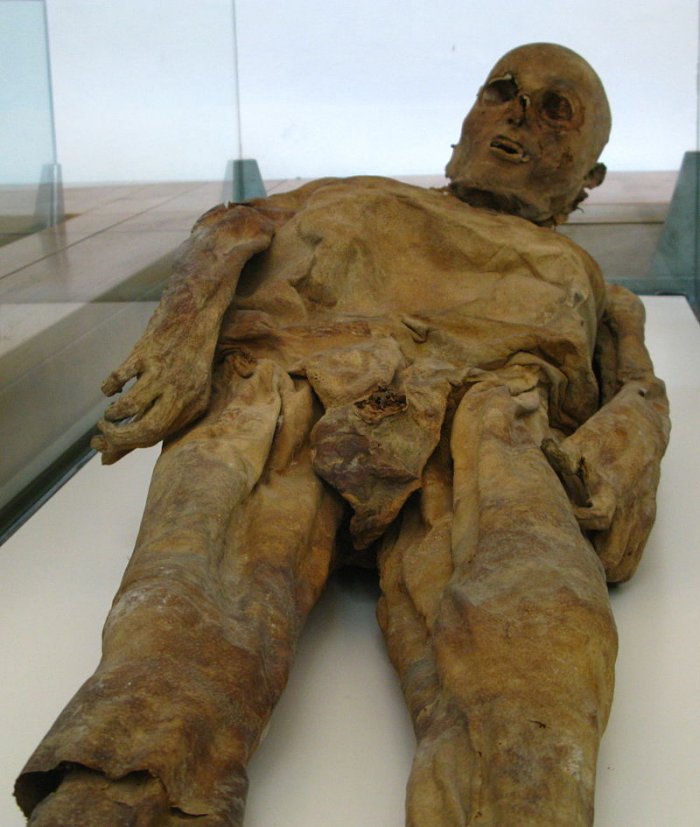Strange Mummies Of Venzone: Ancient Bodies That Never Decompose Remain An Unsolved Mystery
Ellen Lloyd - AncientPages.com - These strange mummies were found in the Italian city of Venzone, a small hamlet in the province of Udine.
The first mummy was unearthed in 1647, and soon thereafter scores of similar ancient bodies were discovered buried beneath the town's cathedral.
Venzone mummies 1920-30's postcard. Credit: Public Domain
Scientists were able to recover as many as 42 mummies, then after an earthquake struck the region in 1976, the number of mummies reduced to only 15.
The Venzone mummies were unusual and quite puzzling because the bodies had never decomposed. Scientists started investigating the ancient corpses to determine what prevented the mummies from deteriorating.
Mummies of Venzone. Image credit: Jean-Marc Pascolo - CC BY-SA 3.0
The mummies were all alike in appearance and showed the same peculiarities when dissected. The bodies preserved their forms and features. Although they were greatly altered, they were still recognizable.
The corpses were extremely light, and researchers noticed the skin, which was is of a yellowish-brown tint, looked like tanned leather. The weight of the mummies varied from 22 to 44 pounds for the tallest individuals.
It soon became clear that natural processes mummified these people, but the cause of the Venzone mummies' preservation remained a mystery.
In the Literary Digest translated portions of an article by F. Savorgnan de Brazza in which he stated that "the preservation of dead bodies may be brought about artificially by the use of chemicals, as is the case with the mummies of Egypt, Peru, and Mexico. The mummification is sometimes also natural; certain tombs and certain cemeteries have the property of preserving and mummifying bodies, and though these are not very numerous, they are not as rare as one might think. .. In all such cases bodies are found to be dried and mummified naturally so that after removal from their tombs they resist the destructive action of the atmosphere indefinitely.
There have been many hypotheses regarding this preservation of bodies in the tombs of Venzone. Some have attributed it to the presence of salts of niter, alumina, or lime, but there are no such salts in the tombs.
New investigations have proved that the mummification is not due to chemical action, but to a biologic process."
Modern scientists have been able to blame this mummification on Hypha tombicina. The microscopic parasite fungus likely does it by rapidly dehydrating the bodies before they can begin to decompose. The fungus grows in the Cathedral graves and manages to dehydrate a body in one year and is responsible for the parchment-like skin of the body. The Hypha tombicitia was discovered in several parts of the bodies and it also covered the wooden coffins.
Mummy was found in the Roman cemetery chapel nearby the cathedral Sant'Andrea Apostolo in Venzone. Image credit: Joadl - CC BY-SA 3.0
However, there is still some doubt that the Hypha parasite is the true cause. Some scientists assert the limestone present in the surrounding earth may be the culprit.
The practice of burying dead in churches was later banned, which prevented further observation of the natural process. While several theories have been offered as to the cause of the mummies' preservation, there is still no conclusive opinion as to what exactly did stop the decomposition process, and the mummies of Venzone remain an ancient mystery.
Updated on March 17, 2022
Written by Ellen Lloyd – AncientPages.com Staff Writer
Copyright © AncientPages.com All rights reserved. This material may not be published, broadcast, rewritten or redistributed in whole or part without the express written permission of AncientPages.com
More From Ancient Pages
-
 Guide To The Classics: On The Art Of Physical Exercise, A 16th Century Account Of Ancient Sports And Workouts
Featured Stories | Jul 26, 2024
Guide To The Classics: On The Art Of Physical Exercise, A 16th Century Account Of Ancient Sports And Workouts
Featured Stories | Jul 26, 2024 -
 Windover Pond – Remarkable 8,000-Year-Old Underwater Cemetery In North America
Archaeology | Dec 28, 2014
Windover Pond – Remarkable 8,000-Year-Old Underwater Cemetery In North America
Archaeology | Dec 28, 2014 -
 Ancient Liangzhu Culture Collapsed Due To Climate Change – New Study Says
Archaeology | Nov 25, 2021
Ancient Liangzhu Culture Collapsed Due To Climate Change – New Study Says
Archaeology | Nov 25, 2021 -
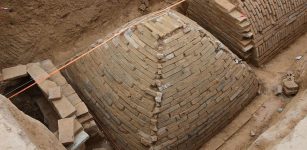 Mysterious Pyramid-Shaped Tomb Discovered In China
Archaeology | Mar 15, 2017
Mysterious Pyramid-Shaped Tomb Discovered In China
Archaeology | Mar 15, 2017 -
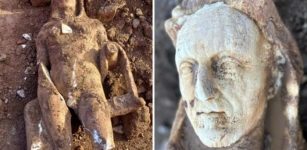 Ancient Life-Size Marble Statue Of Hercules Discovered In Rome
Archaeology | Jan 28, 2023
Ancient Life-Size Marble Statue Of Hercules Discovered In Rome
Archaeology | Jan 28, 2023 -
 Did Neanderthals And Modern Humans Meet In The Czech Republic 50,000 Years Ago?
Archaeology | Jun 17, 2017
Did Neanderthals And Modern Humans Meet In The Czech Republic 50,000 Years Ago?
Archaeology | Jun 17, 2017 -
 On This Day In History: Stone Of Destiny Stolen From Westminster Abbey In London – On Dec 25, 1950
News | Dec 25, 2016
On This Day In History: Stone Of Destiny Stolen From Westminster Abbey In London – On Dec 25, 1950
News | Dec 25, 2016 -
 Mystery Of The Vanished Settlers Of Greenland – What Happened To The Lost Viking Colonists?
Books | Jul 22, 2023
Mystery Of The Vanished Settlers Of Greenland – What Happened To The Lost Viking Colonists?
Books | Jul 22, 2023 -
 Olmec Civilization Remains An Intriguing Ancient Puzzle
Civilizations | Feb 2, 2017
Olmec Civilization Remains An Intriguing Ancient Puzzle
Civilizations | Feb 2, 2017 -
 The Untold Story Of Mexico’s Ancient Giant Indians – Cunning Plan And The Evil Nation – Part 2
Ancient Mysteries | Sep 23, 2019
The Untold Story Of Mexico’s Ancient Giant Indians – Cunning Plan And The Evil Nation – Part 2
Ancient Mysteries | Sep 23, 2019 -
 Stonehenge Is Older Than Mankind – Archaeologist Suggests
Archaeology | Apr 12, 2018
Stonehenge Is Older Than Mankind – Archaeologist Suggests
Archaeology | Apr 12, 2018 -
 Unique Purbeck Marble Found On England’s Oldest Historic Shipwreck
Archaeology | Jun 14, 2024
Unique Purbeck Marble Found On England’s Oldest Historic Shipwreck
Archaeology | Jun 14, 2024 -
 How Did These Five Common Words Enter The English Language?
Linguistic Discoveries | Oct 28, 2024
How Did These Five Common Words Enter The English Language?
Linguistic Discoveries | Oct 28, 2024 -
 Ancient Mysteries Of Arizona – Traces Of A Vanished Race And Secrets Of An Underground World
Ancient Mysteries | Mar 12, 2019
Ancient Mysteries Of Arizona – Traces Of A Vanished Race And Secrets Of An Underground World
Ancient Mysteries | Mar 12, 2019 -
 New Fossil Link In Bird Evolution Discovered
Evolution | Sep 7, 2023
New Fossil Link In Bird Evolution Discovered
Evolution | Sep 7, 2023 -
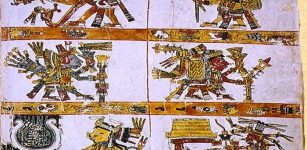 Codex Borgia: Pre-Columbian Mexican Manuscript Of Great Importance
Ancient Traditions And Customs | Sep 7, 2016
Codex Borgia: Pre-Columbian Mexican Manuscript Of Great Importance
Ancient Traditions And Customs | Sep 7, 2016 -
 Queen Marie Antoinette’s Silk Shoe Auctioned In Versailles
Artifacts | Nov 17, 2020
Queen Marie Antoinette’s Silk Shoe Auctioned In Versailles
Artifacts | Nov 17, 2020 -
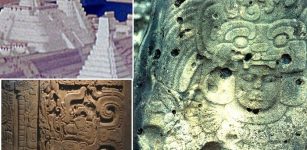 Tikal Of Maya: Sophisticated Culture That Experienced Humble Start, Golden Age, Wars And Decline
Featured Stories | Apr 4, 2022
Tikal Of Maya: Sophisticated Culture That Experienced Humble Start, Golden Age, Wars And Decline
Featured Stories | Apr 4, 2022 -
 Giant 4,500-Year-Old Axe Grinding Site Discovered In Scotland
Archaeology | Dec 13, 2022
Giant 4,500-Year-Old Axe Grinding Site Discovered In Scotland
Archaeology | Dec 13, 2022 -
 Extraordinary Discovery Of 2,000-Year-Old Bronze Statue Rewrites Etruscan-Roman History
Archaeology | Nov 8, 2022
Extraordinary Discovery Of 2,000-Year-Old Bronze Statue Rewrites Etruscan-Roman History
Archaeology | Nov 8, 2022




